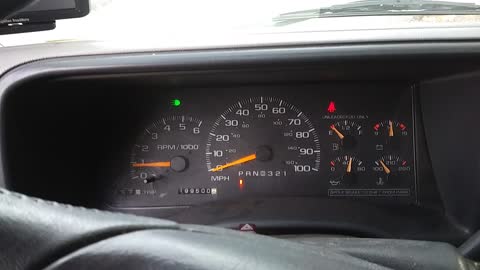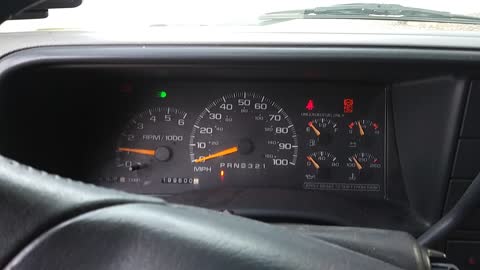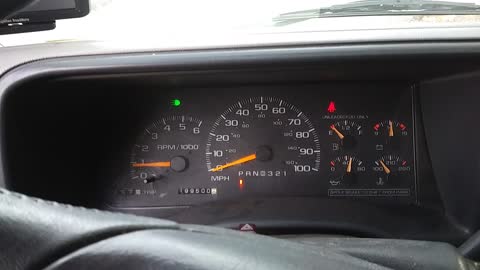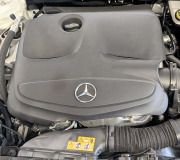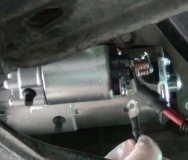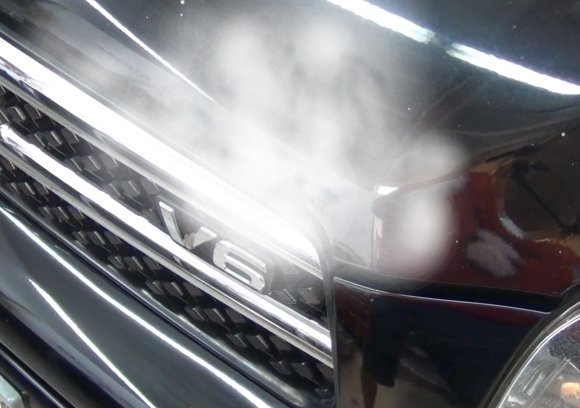Good afternoon.
Can you upload a video with the noise so I can hear it?
As far as the 300, did you replace the plugs?
How is the oil level?
Roy
300 code
Circuit Description
The crankshaft position (CKP) sensor and camshaft (CMP) position sensor detects a misfire. The VCM monitors the speed of the crankshaft. The VCM detects a deceleration of the crankshaft that is not associated with normal engine speed reduction. In order to determine if a misfire occurred, the VCM compares the deceleration information to the engine speed and engine load. If a misfire event is determined, the VCM compares the crankshaft position to the cam sensor signal in order to determine which cylinder misfired. The VCM stores the information in separate accumulators for each cylinder. Upon completion (or failure) of the test, the VCM evaluates the number of misfires in each accumulator. If the accumulators are somewhat even or if 3 or more cylinders are misfiring, then this determines that a random misfire has occurred. The VCM also utilizes the input from the ABS wheel speed sensor in order to determine if a rough road condition exists which could cause a crankshaft acceleration and deceleration. If a rough road condition exists, the diagnostic will not run. This Diagnostic Trouble Code (DTC) is a type B DTC.
Conditions for Setting the DTC
25 cycles have elapsed since Transmission shift (automatic only).
No TP sensor DTCs.
No MAF sensor DTCs.
No Camshaft Position sensor DTCs.
No VS sensor DTCs.
No Crankshaft Position sensor DTCs.
The ECT is greater than or equal to -7°C.
The engine speed between 600 RPM and 5600 RPM.
The system voltage between 9 volts and 16 volts.
The positive throttle position change is less than 4.9% for 100 msec.
The negative throttle position change is less than 2.9% for 100 msec.
Action Taken When the DTC Sets
If the VCM determines that the misfire is significant enough to have a negative impact on emissions, the VCM turns on the Malfunction Indicator Lamp (MIL) after the misfire has been detected on 2 non-consecutive trips under the same operating conditions. If the misfire is severe enough that catalytic converter damage could result, the MIL flashes while the misfire is present.
Conditions for Clearing the MIL/DTC
The VCM turns the MIL off after 3 consecutive driving trips without a fault condition present. A history DTC will clear if no fault conditions have been detected for 40 warm-up cycles (coolant temperature has risen 40°F from the start-up coolant temperature and the engine coolant temperature exceeds 160°F during that same ignition cycle) or the scan tool clearing feature has been used.
Diagnostic Aids
The Misfire Index counts the number of misfires. The scan tool can monitor the Misfire Index. There is a current and history misfire counter for each cylinder. Use the current misfire counter in order to determine which cylinder is misfiring.
Many different condition could cause an intermittent misfire.
Check for the following conditions:
1. Check the spark plug wires and the coil wire for the following conditions:
Ensure that the spark plug wires are securely attached to the spark plugs and the distributor cap.
Check the wire routing in order to ensure that crossfiring is not occurring.
If the misfire occurs when the weather is damp, the problem could be due to worn plug wires.
In order to test for this condition, spray the wires with water and with the engine running, watch for spark to jump from the wires. If a spark is visible, replace the wires.
2. Check for contaminated and a low fuel level and the following conditions:
Check the fuel condition and quality. Dirty or contaminated fuel could cause a misfire condition.
If the fuel level is low, contaminants in the bottom of the fuel tank could enter into the fuel metering system.
For more information, refer to fuel supply system.
Test Description
The numbers below refer to the step numbers on the diagnostic table.
2. If DTCs P0337 (Crankshaft Position Sensor Circuit Low Input) or P0338 (Crankshaft Position Sensor Circuit - High Input) are set, this could result in a misfire condition.
4. In order to duplicate the conditions under which the misfire occurred, it may be necessary to drive the vehicle and monitor the scan tool DTC Set This Ignition Cycle variable.
5. When checking the spark at the spark plug wires, the spark should be consistent. A few sparks then nothing is no spark.
7. At this point, the ignition system is OK and the problem may be in the fuel system. Fuel System Diagnosis must be performed in order to determine the cause of the problem. See: Computers and Control Systems > Component Tests and General Diagnostics
engine knock
Related Links
Crankshaft Bearing Service Procedure
File In Section: 06 - Engine/Propulsion System
Bulletin No: 99-06-01-003
Date: April, 1999
TECHNICAL
Subject:
Engine Bearing Knock Noise,
(Re-support Crankshaft, Select-fit Undersize Connecting Rod Bearings)
Models:
1999 Cadillac Escalade
1996-99 Chevrolet and GMC C/K, G, P Models
with 5.0L or 5.7L Engine (VINs M, R - RPOs L30, L31)
Important:
GM Canada Dealers require prior DSM authorization to apply this bulletin.
Condition
Some customers may comment about an engine "knocking" noise.
Cause
A condition may exist in some engines where, the crankshaft is NOT being evenly supported by all five crankshaft bearing inserts. In these engines, the number 1, 2, 3, and 4 crankshaft bearing inserts are supporting the crankshaft, and the number 5 crankshaft journal (rear) has excessive clearance relative to the number 5 crankshaft (main) bearing cap insert. In this condition, the crankshaft flexes under load, and pounds on the lower number 5 crankshaft (main) bearing insert creating the knocking sound. The engines were originally built with 0.0006 in. Undersize crankshaft (main) bearing inserts in the number 2, 3, and 4 crankshaft (main) bearing locations and 0.001 in. Undersize insert in the number 5 crankshaft (main) bearing location. The service procedure listed below addresses the above condition by lowering the crankshaft at the number 2, 3, and 4 crankshaft (main) bearing positions (increased crankshaft (main) bearing size of the lower crankshaft (main) bearing inserts) and raising the number 5 lower crankshaft (main) bearing insert (undersized insert) in order to properly contact the number 5 crankshaft journal surface. These engines may also exhibit a connecting rod knocking sound. In these engines, the connecting rod knocking sound is caused by excessive connecting rod bearing clearance.
A customer concern vehicle may exhibit one or both of the above stated conditions.
Correction
Follow strategy-based diagnostics for engine noise listed in the front of Section 6 of the Service Manual.
Some additional key points:
Rod Bearing Knock - Occurs on initial engine start-up, and can also be heard as high as 1,500-1,800 RPM. Rod bearing knock typically diminishes or completely goes away when the engine reaches normal operating temperature.
Crankshaft Bearing Knock - Crankshaft (main) bearing knock sounds deeper in the engine and also sounds more muffled. There are two different types of crankshaft bearing knock.
Short duration cold knock typically occurs for 1-5 seconds on engine cold start-up only, and almost always occurs on vehicles equipped with an engine oil cooler.
Hot knock occurs less frequently, typically occurring in very hot ambient temperatures, and can be heard up to 2,000 RPM.
Technicians can increase the likelihood of reproducing bearing induced knock sounds by slightly depressing the accelerator pedal while starting the engine.
Saturday, September 29th, 2018 AT 4:17 PM
